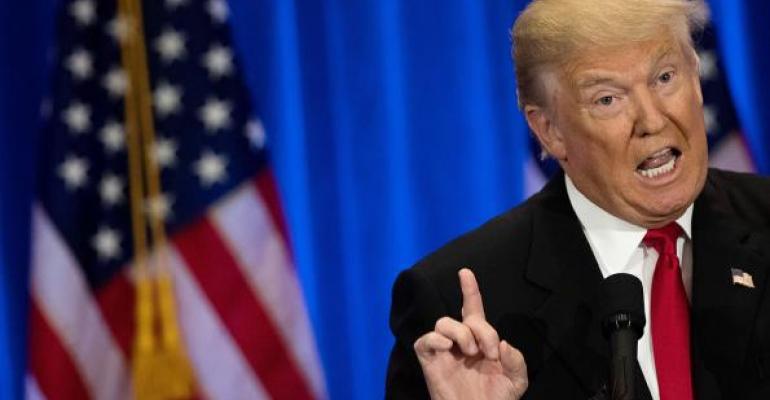By Andrea Wong
(Bloomberg) --Donald Trump may have a point: the dollar is indeed strong. Judging from the Federal Reserve’s own trade-weighted dollar index, the U.S. currency is now around 7 percent above its four-decade average.
A strong dollar isn’t necessarily detrimental to the economy, but it may torpedo Trump’s vision to revive America’s manufacturing sector. Before his comments to the Wall Street Journal that the strong dollar is "killing" the ability of U.S. companies to compete, the 22 percent appreciation since mid-2014 had already worsened the trade deficit, while the full effect hasn’t yet percolated into the real economy.
What can Trump and his administration do if they want a weaker dollar? Here are five options.
1. Jawboning
Talk is cheap, but it has worked for Trump -- so far. If history is any guide, traders stop listening to government officials and central bankers in the absence of concrete policies that target exchange rates.
Just look at Japan. When Abenomics lost steam and traders started to bet on a stronger yen, Finance Minister Taro Aso repeatedly warned that the surge had been disorderly and one-sided, hinting that the government could intervene to weaken it. The yen ended up surging as much 22 percent last year.
2. Coordinated Intervention
The Treasury Department has worked with central banks worldwide to bring down and drive up the dollar over the past three decades -- most recently in 2011 to help curb the appreciation in the yen. The problem is coordinated intervention has gone out of vogue in recent years, partly because analysts aren’t sure whether it really works when officials are trying to sway a vast market like the dollar, which sees about $5 trillion exchange hands every day.
Also, most currency interventions are sterilized, meaning central banks would inject or take out liquidity on the side as part of the transaction to maintain the level of money supply. An argument "common among economists, was that sterilized intervention has no long-lasting effect and unsterilized intervention is just another kind of monetary policy," Jeffrey Frankel, an expert in currency intervention and a professor at Harvard University’s Kennedy School of Government, wrote in a paper published December 2015.
3. Unilateral Intervention
Going it alone is simply a taller order than having the backing of your allies, in this instance the Group-of Seven-nations. A 2013 communique among G-7 nations denounced unilateral intervention and agreed not to target exchange rates.
Yet the statement acknowledged that "excessive volatility and disorderly movements in exchange rates can have adverse implications for economic and financial stability." The Trump administration could spin the same communique to make the case for intervention.
While Charles St-Arnaud, a senior economist at Nomura Securities International, doesn’t think Trump will unilaterally weaken the dollar, "the U.S. can have a good argument," he said. "The dollar has appreciated a lot in a rapid pace. They can always argue it’s difficult for the economy to adjust to such a big, broad-based appreciation."
Unilateral intervention poses the risk of turning into a full-blown currency war. If the Treasury decides to break from the pack and starts weakening the dollar, other countries may be justified to do the same.
4. Creation of Sovereign Wealth Fund
Nomura also floated a rather left-field option: creating a sovereign wealth fund. Many emerging nations and even developed ones such as Norway have coffers that buys foreign assets from government bonds to real estates, and there’s no reason why the U.S. can’t follow.
5. Non-Currency Intervention
In the end, Trump may just focus on protectionist policies that produced a weaker dollar as a natural consequence. He has vowed to renegotiate trade treaties and impose import tariffs on China and Mexico, moves that may destabilize the dollar and engineer a more favorable exchange rate for America’s exporters.
To contact the reporter on this story: Andrea Wong in New York at [email protected] To contact the editors responsible for this story: Boris Korby at [email protected] ;Jeremy Herron at [email protected] Dave Liedtka




